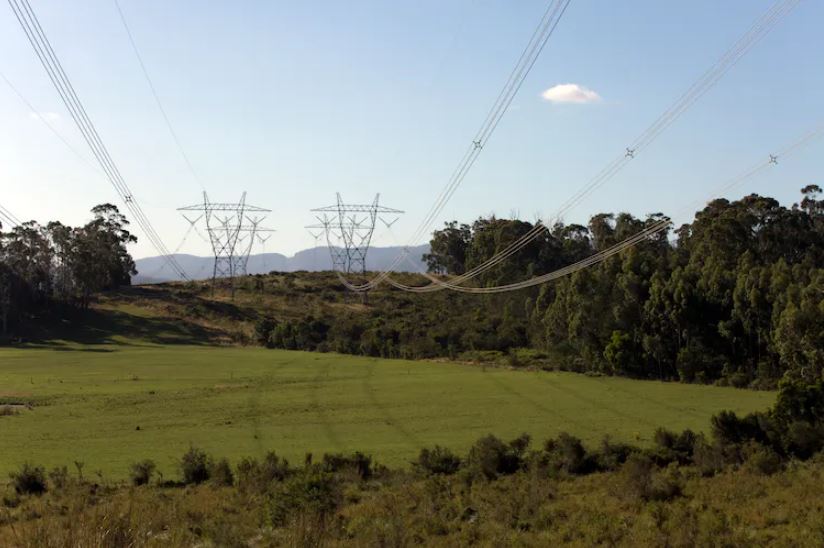Extreme weather is being blamed for the downing of six electricity transmission towers near Geelong and the resulting power outages. At its worst, more than 600,000 homes and businesses were left without power.
In a knock-on effect of the towers’ collapse, a major coal generator was disconnected from the state’s power system, leading to spiraling wholesale power prices and load shedding.
Victoria’s Department of Energy, Environment and Climate Change confirmed the series of events in a post on social media site X – formerly Twitter.
The ABC reports that all four units at AGL’s Loy Yang A power station in the Latrobe Valley were shut down around 2pm on Feb. 13. It was planned that three of the generation units be restarted overnight.
As of 8:30pm last night, the Australian Electricity Market Operator (AEMO) reported that almost half-a-million Victorian electricity customers remained without power. It said that it may day “days if not weeks to restore electricity” to everyone impacted. Details of the outages, as reported by AEMO, are below.
AEMO noted that “strong winds and fallen trees” had damaged “hundreds of powerlines and power poles.”
 Market impacts
Market impacts
The shutdown of such a large generator such as Loy Yang A had a major impact on wholesale electricity prices. The generator, operated by AGL, has a generating capacity of 2.2 GW – when fully operational.
The ABC reports that wholesale power prices in Victoria surged as a result yesterday. “Victorian wholesale power prices increased to $16,600 per megawatt hour this afternoon, compared to $29.61 in Queensland and $286.97 in NSW.”
Speaking to the ABC, Bruce Mountain noted that as Loy Yang A returned to full generation prices would stabilize. But he said that locally produced energy could assist to reduce the vulnerability of the electricity system.
“We are very exposed through long distance transmission lines to winds and storms and I think that may well be the root of the problem here,” Mountain said. “We can produce electricity cheaply locally.” Mountain is director of Victoria University’s Energy Policy Centre.
While a full picture of how yesterday’s power outages and extreme price events could be avoided in the future will take some time to become clear, as Mountain noted. However, a call was made for more wind and solar generation, “firmed” by batteries to help strengthen the power system.
Tim Buckley, the director of Climate Energy Finance in Sydney described yesterday’s events as a “debacle” and called for a rapid rollout of wind, solar, and battery energy storage.
“The result is electricity prices spiking to the maximum $16,600/MWh – meaning all electricity producers are absolutely cashing in big time, profits for generators, a nightmare for Victorian energy users. Time to break the fossil fuel cartel gouging Australians and accelerate the deployment of firmed renewable energy as fast as possible,” wrote Buckley in a post on LinkedIn.
Buckley called for annual installations of 3 GW of wind, 5-15 GW of solar, and 2-3 GW of battery energy storage to address the current situation.
In the aftermath of the outage, investigations will no doubt look at the causes, handling by regulators, along with ways the system can be strengthened in the future. AGL, the operator of Loy Yang A, has already indicated that it will cooperate with AEMO on an investigation – as reported by The Guardian Australia.
The team at WattClarifty reported on the outage and market developments as news became available. The site pointed to the work of meteorologist Ben Domensino from Weatherzone, who noted that roughly 544,000 lightning strikes had hit Victoria between 9am and 9pm yesterday. Winds up to 130 km/h were recorded in the west of the state.
Yesterday’s events in Victoria are reminiscent of the statewide power outage that befell South Australia in 2016. That event was very quickly and vociferously politicized by renewable energy opponents.
The SA outage in 2016 also resulted in a series of innovative energy underakings, including the establishment of the initial stage of the Hornsdale Power Reserve and the establishment of a then world-leading VPP in Adelaide.
This content is protected by copyright and may not be reused. If you want to cooperate with us and would like to reuse some of our content, please contact: editors@pv-magazine.com.









By submitting this form you agree to pv magazine using your data for the purposes of publishing your comment.
Your personal data will only be disclosed or otherwise transmitted to third parties for the purposes of spam filtering or if this is necessary for technical maintenance of the website. Any other transfer to third parties will not take place unless this is justified on the basis of applicable data protection regulations or if pv magazine is legally obliged to do so.
You may revoke this consent at any time with effect for the future, in which case your personal data will be deleted immediately. Otherwise, your data will be deleted if pv magazine has processed your request or the purpose of data storage is fulfilled.
Further information on data privacy can be found in our Data Protection Policy.